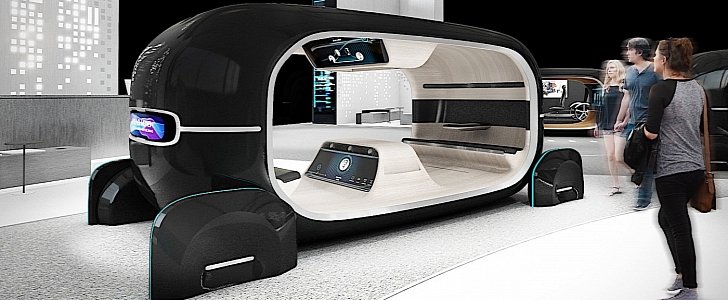At a time of great change for the automotive industry, views about the future of motoring vary. The general consensus is that over the following decade, electric cars will become commonplace, and give birth to incipient autonomous vehicles.
But what comes after that? After the electric car and the self-driving one are here, what’s next?
Very few have dare ask this question, as even by the most optimistic of projections the future of motoring is still decades away. So worrying about how cars will work half a century from now does seem out of place.
There is, of course, the Consumer’s Electronics Show in Las Vegas (CES), a place of wonder and ideas where such questions do belong. And its there that Kia will show its idea of how the cars of the post-autonomous cars era will be like.
More to the point, self-driving vehicles will call for the creation of ways to keep motorists safe from boredom, and possibly improve the otherwise dull experience of being driven by a car in the future.
Kia’s approach is an array of technologies called Real-time Emotion Adaptive Driving (READ) developed together with the brainiacs from the Massachusetts Institute of Technology (MIT) Media Lab's Affective Computing group.
From the limited amount of information made public ahead of the tech’s debut at CES 2019, it’s safe to say READ does exactly that: it reads how the passenger is feeling and adjusts in-car settings accordingly to bring back the good mood.
At work here is an artificial intelligence that can pick up and interpret the bio-signals of the people inside and then optimize and personalize the vehicle cabin space accordingly.
“We have developed R.E.A.D. System to create interactive future mobility in-cabin space by converging cutting edge vehicle control technology and AI-based emotional intelligence,” said in a statement Albert Biermann, Kia’s R&D head.
“Consequently, R.E.A.D. System will enable continuous communication between drivers and vehicles through the unspoken language of ‘emotional feeling’, thereby providing an optimized human senses-oriented space for drivers in real-time.”
More on Kia’s technology will become available during the CES show in January.
Very few have dare ask this question, as even by the most optimistic of projections the future of motoring is still decades away. So worrying about how cars will work half a century from now does seem out of place.
There is, of course, the Consumer’s Electronics Show in Las Vegas (CES), a place of wonder and ideas where such questions do belong. And its there that Kia will show its idea of how the cars of the post-autonomous cars era will be like.
More to the point, self-driving vehicles will call for the creation of ways to keep motorists safe from boredom, and possibly improve the otherwise dull experience of being driven by a car in the future.
Kia’s approach is an array of technologies called Real-time Emotion Adaptive Driving (READ) developed together with the brainiacs from the Massachusetts Institute of Technology (MIT) Media Lab's Affective Computing group.
From the limited amount of information made public ahead of the tech’s debut at CES 2019, it’s safe to say READ does exactly that: it reads how the passenger is feeling and adjusts in-car settings accordingly to bring back the good mood.
At work here is an artificial intelligence that can pick up and interpret the bio-signals of the people inside and then optimize and personalize the vehicle cabin space accordingly.
“We have developed R.E.A.D. System to create interactive future mobility in-cabin space by converging cutting edge vehicle control technology and AI-based emotional intelligence,” said in a statement Albert Biermann, Kia’s R&D head.
“Consequently, R.E.A.D. System will enable continuous communication between drivers and vehicles through the unspoken language of ‘emotional feeling’, thereby providing an optimized human senses-oriented space for drivers in real-time.”
More on Kia’s technology will become available during the CES show in January.

